I was recently asked by Flic Film to beta test their new batch of D96, or as they label it, Developer 96. I was really curious because last year I shot some Double-X and people told me I had super harsh blacks because I needed to use D96 to open those shadows.
I know you more seasoned photographers will say D96 is made for it, and yeah sure, we absolutely will be looking at comparisons of identical scenes developed in each soup, but there are other factors to take into account, like your wallet and workflow.
What made sense to me was to compare to D76, and then for a third developer I thought a wild card might be interesting: Rodinal. I chose Rodinal because it’s classic and I’ve had good feedback on my other Rodinal related experiments.
Okay, first thing that we need to take into account, I think, is your wallet. If it’s too expensive for you, the other points are moot. If money wasn’t a factor I’d be shooting Acros 24/7.
Now, prices are not concrete, and you’ll be able to find better deals the more you shop around, so these numbers are not absolute, but they should give us a ballpark of cost per roll.
For Kodak D76 and D96 I will be using the price available at The Film Experience Camera Store in Longview Alberta and for Rodinal I will be using Blazinal available here in Calgary at The Camera Store.
To make a gallon, or 3.8 liters of Kodak D76, it’ll set you back $13 Canadian dollars
To make a liter of D96, that will be $10
Rodinal works a little different, it’s a one shot, but 500ml is $24.87
Now, let’s crunch some numbers and figure out a cost per roll to develop.
Each of them have different ratios of stock to working solution, and we’ll take a look at the most common dilutions.
Kodak D-76, after mixing can be poured straight, or mixed 1+1 with water. There are more dilute measurements you can make, for sure, but that will add to your developing time, and change how your image will turn out. For today’s example, we’ll just talk about stock or 1+1 dilutions. I have a video on my comparisons of Kodak D76 dilutions if you’re curious.
Assuming you develop one 35mm roll at a time. That is either 12 rolls of film or with 1+1 it’s 25 rolls. If you really want to stretch it, and decide to only develop 35mm rolls in pairs at a 1+1 ratio, you can develop 30 rolls.
This means it will cost you between $0.43-$1.08 per roll of 35mm film to develop.
The disadvantage here is once you initially mix the powder, it has about a three month shelf life. So to get the most out of a batch, you need to develop ten rolls of film per month.
Next up is Rodinal. The most common dilutions are 1+25, and 1+50. This is a high concentrate developer that is in liquid form when you buy it.
To develop a 35mm roll one at a time you’re only going to need 11.5ml for a 1+25 solution, or 5.9ml for 1+50. That’s 43 or 84 rolls respectively. Developing in pairs will give you 52 and 102 rolls for 1+25 and 1+50 dilutions in a 500ml Paterson tank. How that translates into a cost per roll is $0.24-$0.58.
The advantage here is it has a longer shelf life as it doesn’t need to be prepared until you’re ready to develop and can be mixed a little at a time. While I have found Rodinal tends to crystallize around the mouth of the bottle I haven’t seen any adverse affects from that.
Last on the list here is D96. The D96 kit I have is a one liter for $10. It’s a powder like D76 so once you’ve mixed it up, it has a shelf life which I assume is similar to other powder developers, at about three months. The difference here is it’s a motion picture developer made for films like Double-X which is a motion picture film.
D96 is the most expensive on this list, at 3 rolls of 35mm per pack, or 4 if you double up in a 500ml tank.
While there is no official developing time for using D96 in a 1+1 solution, it is possible to get good results, and that will stretch your number of rolls to 6 in a 300ml tank or 8 if you double up in a 500ml tank.
I am also aware that D96 can be replenished. I’ve seen claims of using a separate batch of prepared D96 and adding a little each time, but I could not find a definitive answer, and I’m also aware of D96R which is a replenisher with a slightly different formula, but I haven’t seen it available. So my calculations for this article are based on single use. This makes the cost per roll $1.25-$3.33 per roll.
Let’s talk a bit about developing times.
Kodak D76 and D96 both have a developing time of seven minutes, but D96 is recommended at 21C instead of the normal 20C you see with most films. Finally Rodinal 1+25 has the quickest time of 5:45 at 20C. So, at the end of this assessment, if you decide that the differences are not significant in image quality, the take away here is Rodinal is by far the cheapest and the fastest means to a developed image for Double-X and other films.
Now, on to the comparisons…
To create this comparison I took a shot of my city skyline. I shot the entire roll as fast as possible to minimize any changes in lighting. I took a series of exposures metered properly, doing a spot meter off the buildings, then I shot 3 stops underexposed, and 3 stops overexposed, to see if any of the developers handle them differently as well. I shot this on my Nikon FE which has a reliable shutter, and used a tripod for stability and consistency in composition.
To scan the negatives I used my Epson V800. The scans you see are straight scans with no edits applied, but the software is still going to make a guess at levels, so I’ve also provided the histograms which we’ll go over.
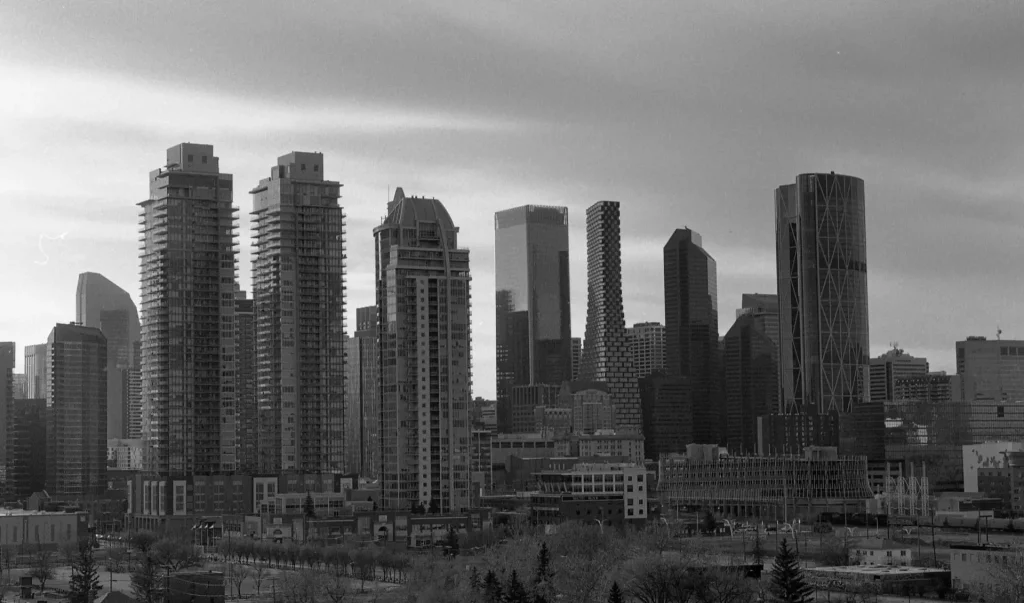
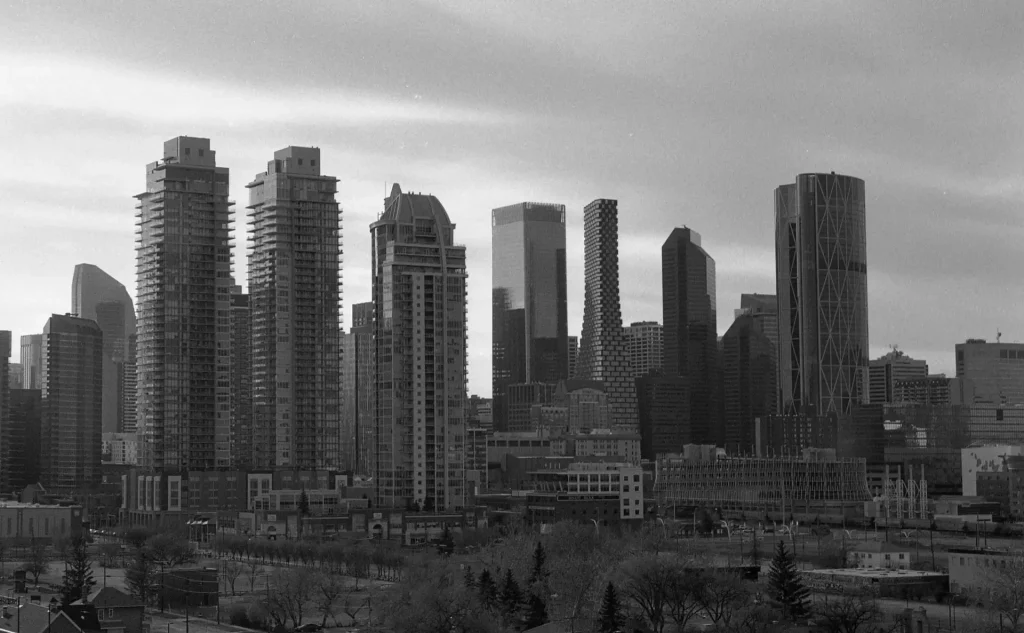
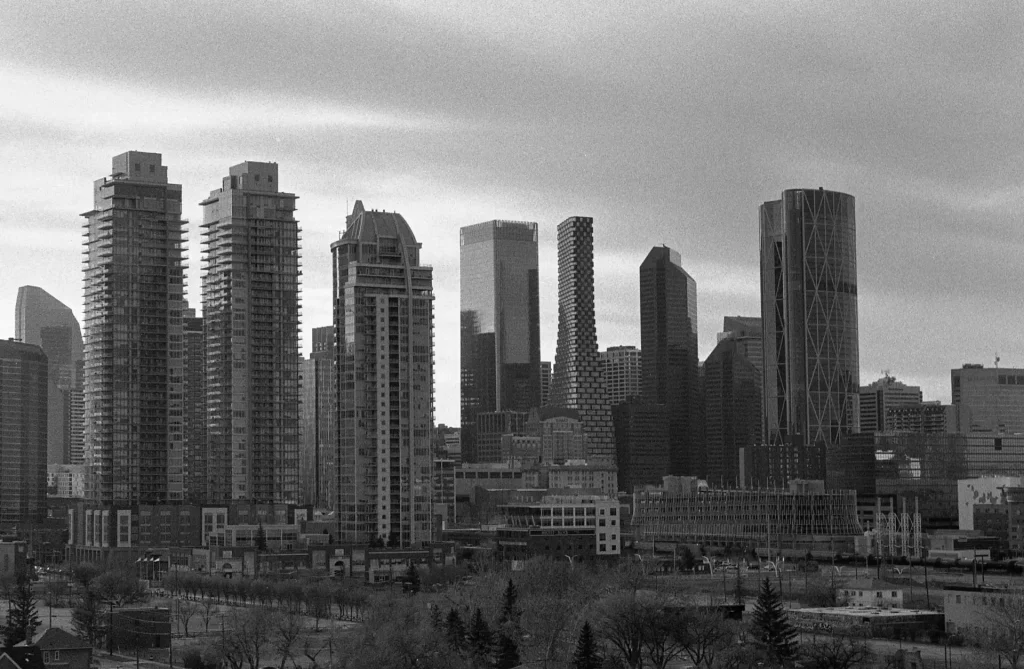
First comparison here are the three images at proper exposure. You may notice that the Rodinal sample is super noisy compared to the other two. This is normal and you’ll find similar results in other high concentrate developers like Kodak’s HC-110. The other thing you may notice is that there is grain clumping, another characteristic of high concentrate developers. Now, if you don’t mind that or even prefer it, that’s okay, if not then the real contest is between D76 and D96.
There is much smoother grain, and an overall flatter image with the other two. The major difference here is that Kodak D76 has more recovery in the highlights, and slightly darker mid-tones, but you really have to look at the buildings to see it.
To get a better idea of the differences, we really need to look at the histograms.
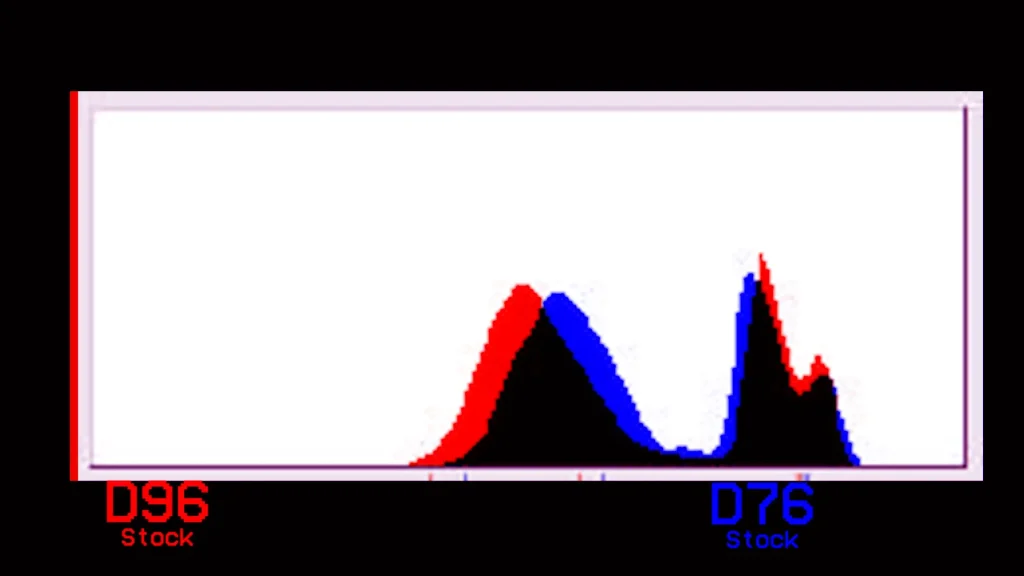
I think the takeaway here is that the D96 provides greater range of tonality.
Here are my final edited versions of both D76 and D96. The difference isn’t really all that much to be honest. A slightly flatter image in the highlights from the D76, as well as what appears to be greater shadow detail in the D96.
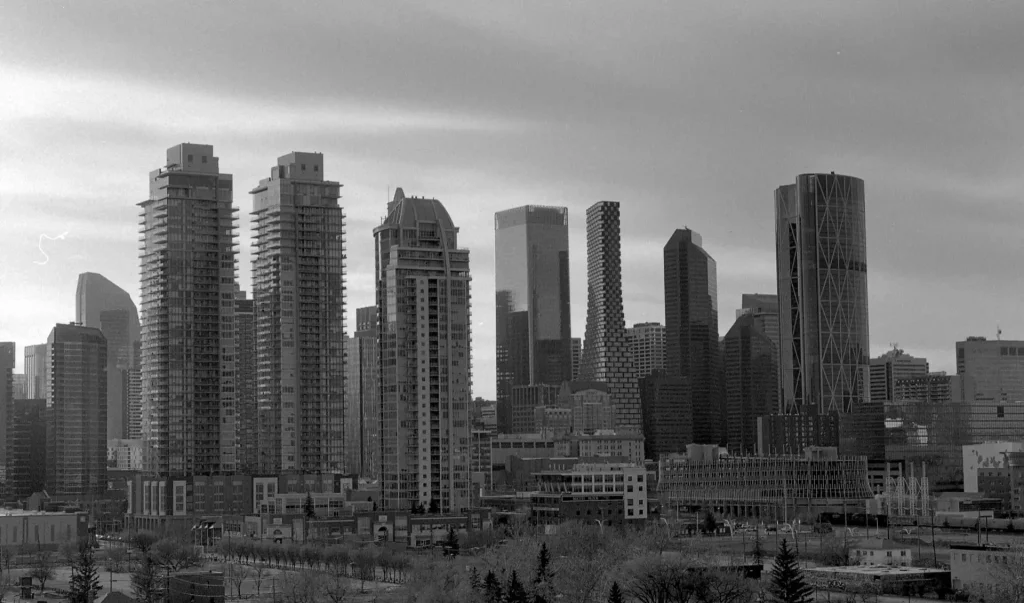
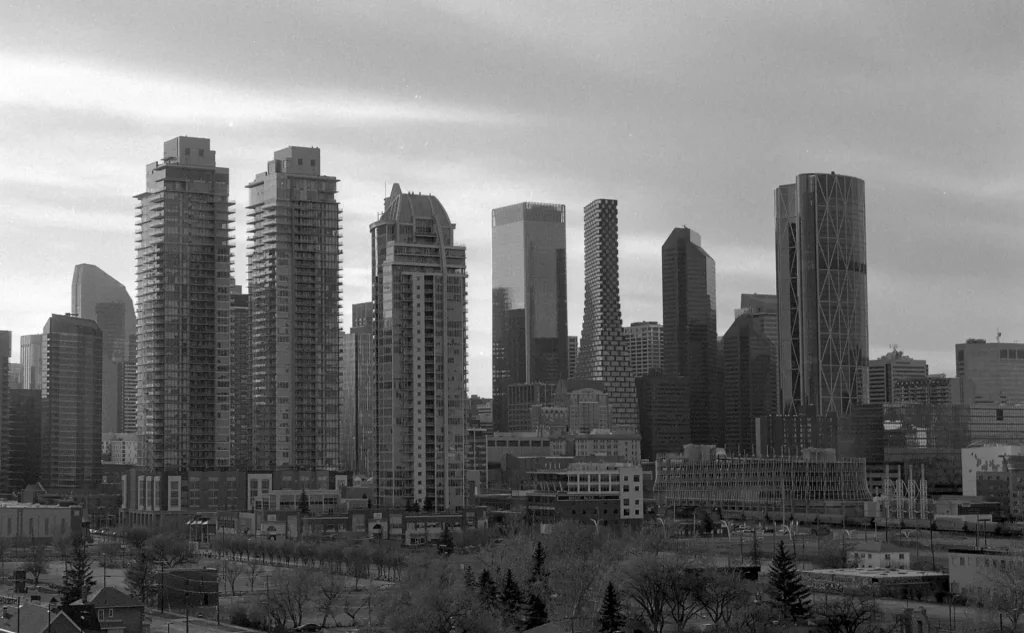
Moving on to the underexposed images you can see fairly clearly the shadow detail drops off in Rodinal pretty fast.
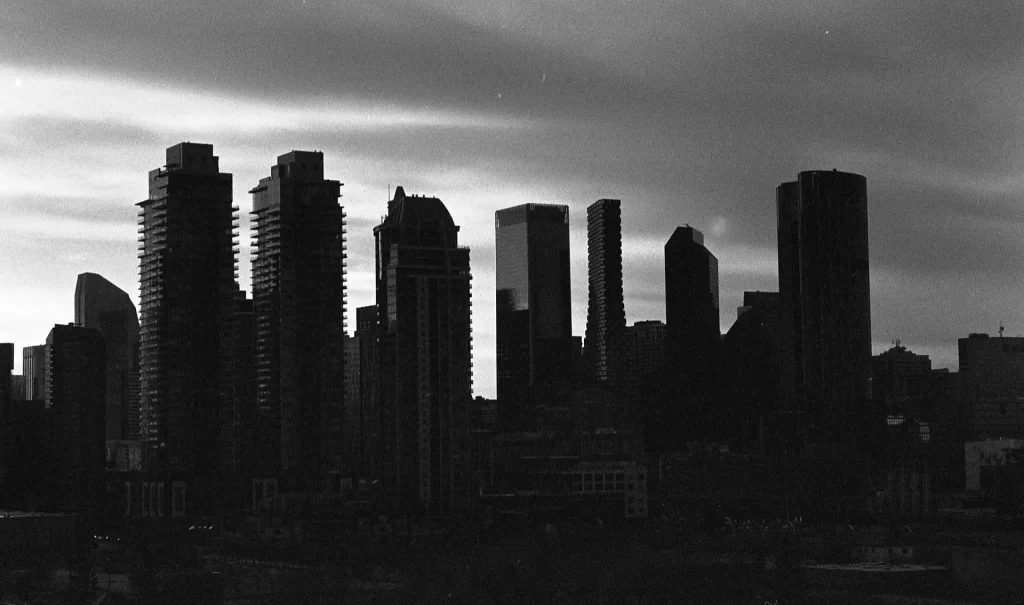
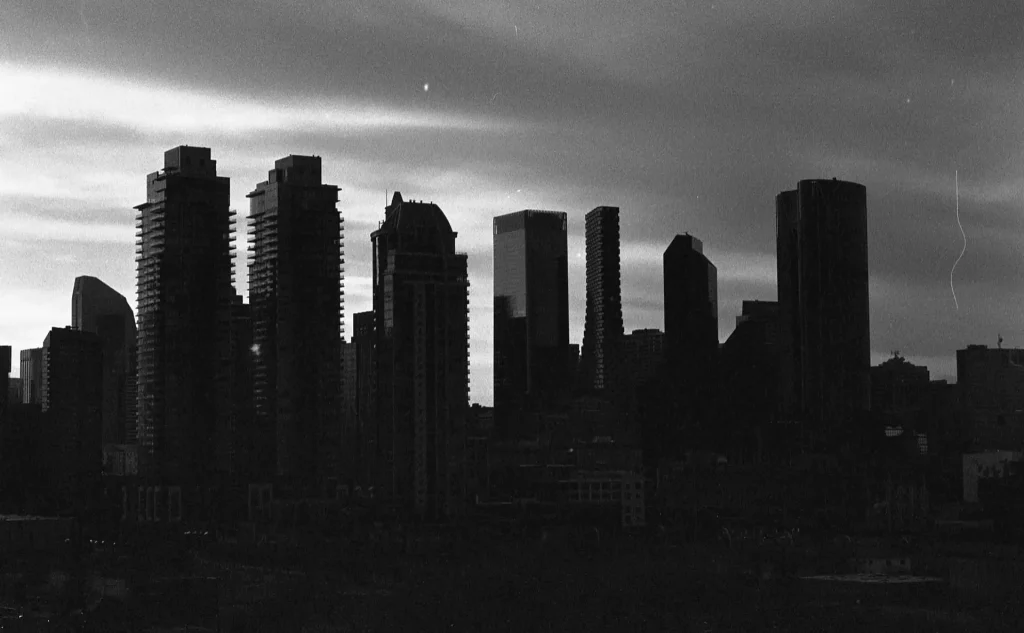
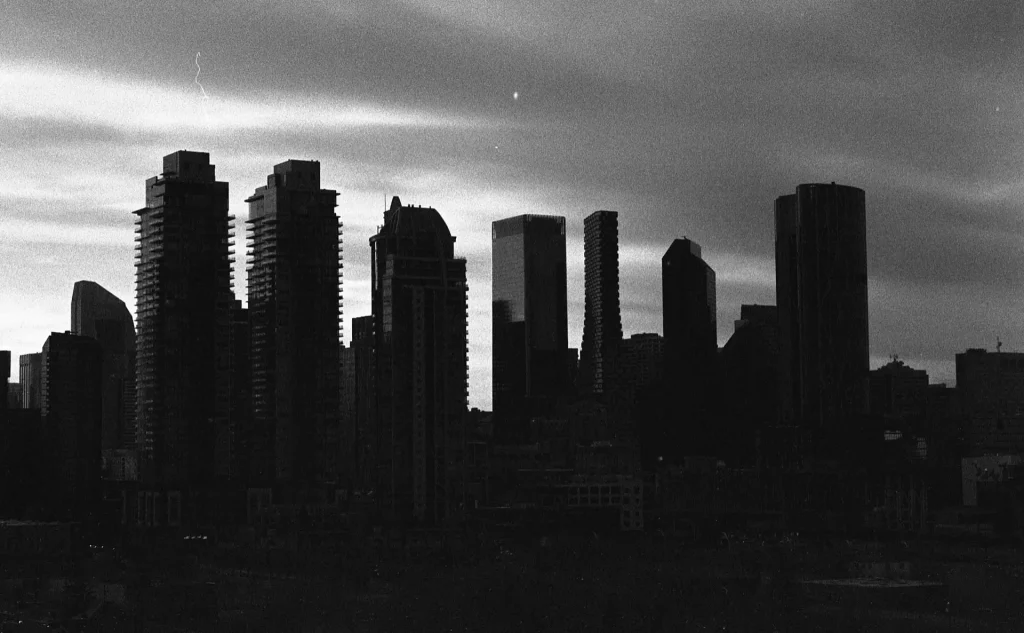
Kodak D76 and D96 are close, but neither is significantly better than the other. On the histogram you’ll see better shadows in the D96 and better highlights in the Rodinal
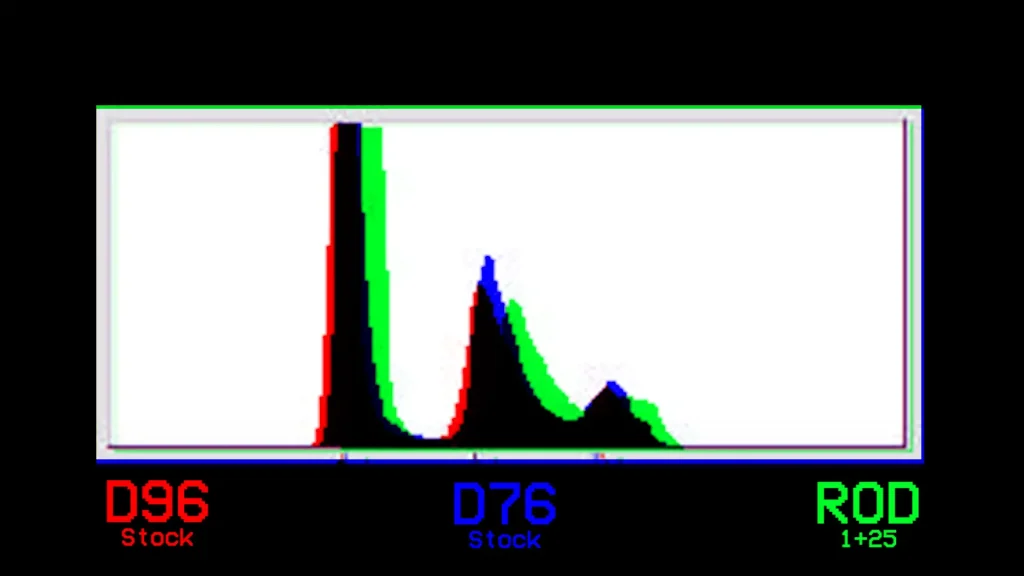
Turning our attention to the over exposed images, we see all three handled overexposure pretty well and in fact I would say the greatest highlight recovery was the Rodinal. If you can get past the chunky grain, Rodinal wins this round.
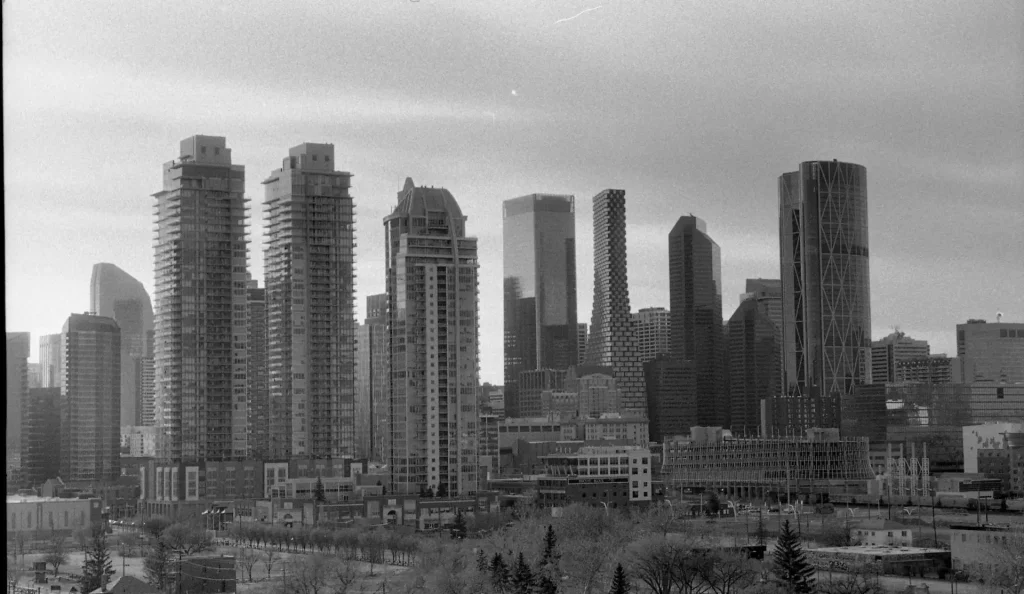
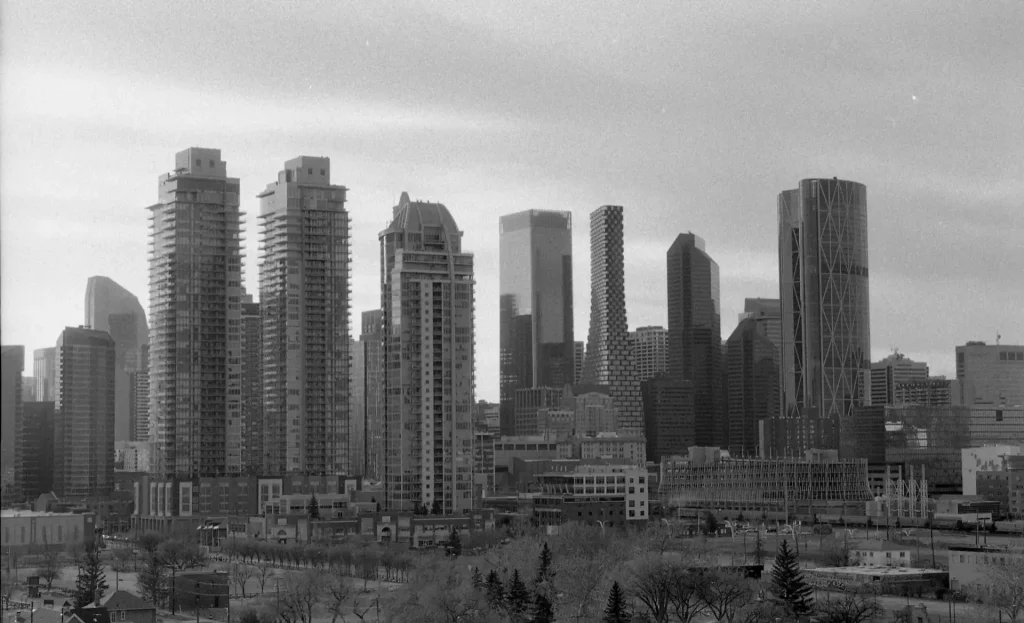
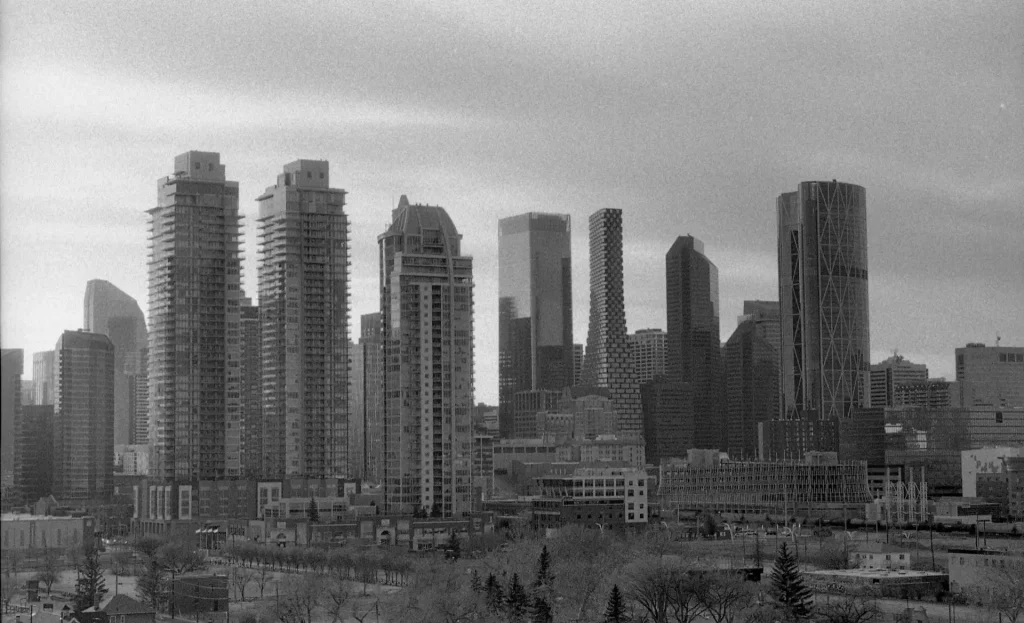
Conclusions
I actually thought I would be going into this experiment with cut and dry answers, and that’s the mistake I make each time I do one of these: assumptions. The biggest surprise, first of all is that is seems as though Rodinal handles overexposure better.
Now while D96 is designed for Double-X it’s very hard to ignore how little of a difference there is between it and D76, fundamentally. While you could argue there is a big difference, I would say that editing and contrast filters can make up for some of that. The advantage that D96 seems to have is in the shadows, and that’s something can’t really be fixed once the detail is lost, where as highlights can be more easily recovered.
What you need to decide for yourself is if these differences are worth the extra cost, in this case, it’s almost 3x more for D96 than Kodak D76.
Kodak D76 is the developer by which all others are judged, and it happens to be my favourite with Xtol being a close second. I liked the results of D96, and I also liked the results of Double-X. One of my favourite photos of 2020 was shot on Double-X, and I’ll use both again. For me, I think where D96 would come into play is if a) I came home from a shoot suspecting my images may be slightly underexposed, b) if I knew I took a real winner and I wanted to ensure a negative with the greatest range or c) if I shot low key studio work or night photography.
Developers are tools, and it’s about the right tool for the right job. Some people want punchy harsh blacks and lots of grain, and that’s okay. Develop with Rodinal, Kodak HC-110 or another high concentrate. Others want more control in the darkroom, in which case I suggest Kodak D76, or spring for the D96 and see if you like it.
Don’t let anyone tell you, you “have to” use a certain developer or you “can’t” use another, that’s a quick road to mediocrity. Don’t be afraid to experiment either though, and challenge your own preconceived notions on films dos and don’ts.
You can find a video version of this article below, and subscribe to me on Youtube here
Share this post:
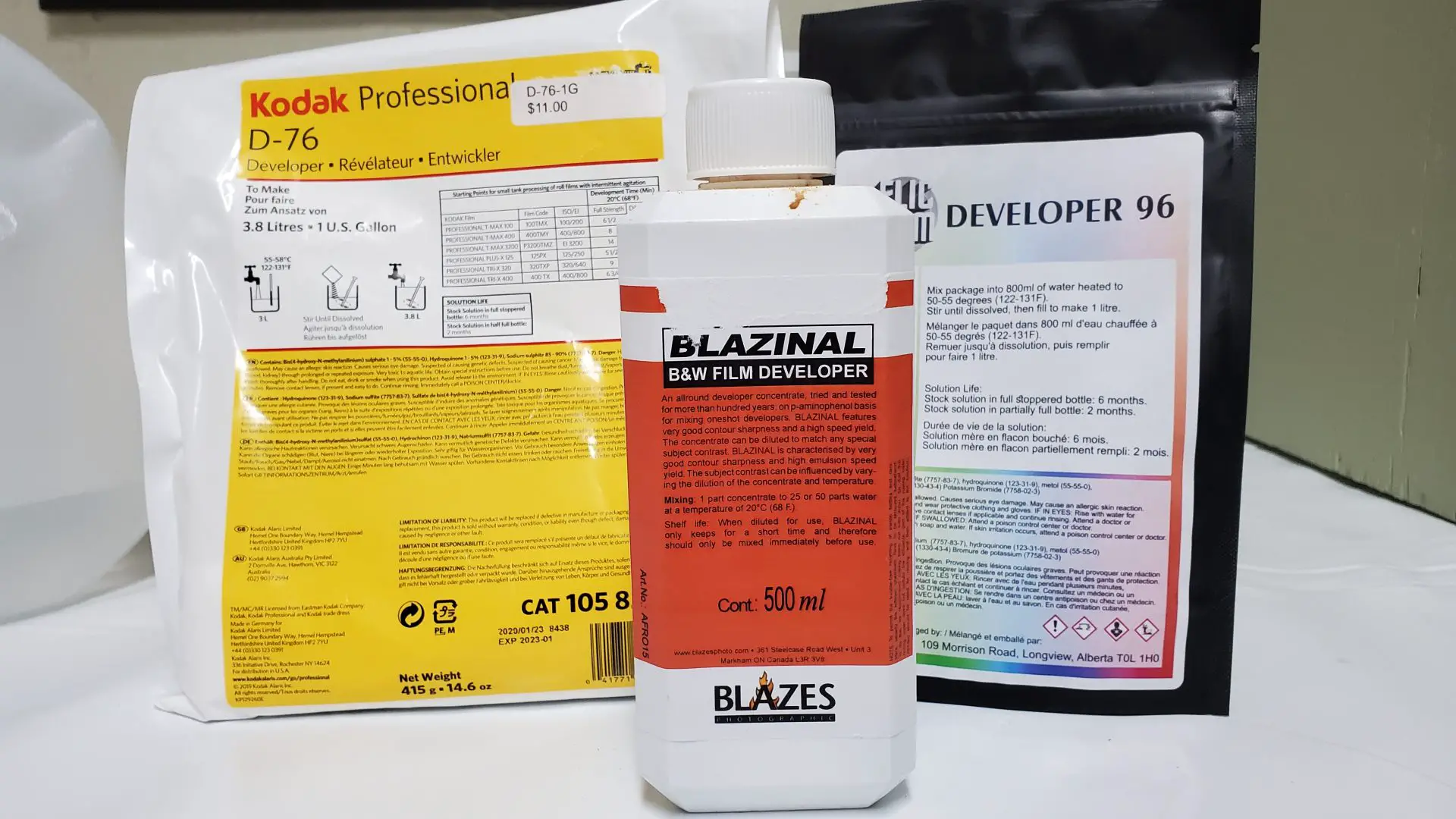








Comments
Jonathan on Rodinal Vs Kodak D76 vs D96, Which is the best for Double-X (5222) – By Azriel Knight
Comment posted: 14/05/2021
Ken on Rodinal Vs Kodak D76 vs D96, Which is the best for Double-X (5222) – By Azriel Knight
Comment posted: 14/05/2021
CHRISTOF RAMPITSCH on Rodinal Vs Kodak D76 vs D96, Which is the best for Double-X (5222) – By Azriel Knight
Comment posted: 14/05/2021
Ken R. on Rodinal Vs Kodak D76 vs D96, Which is the best for Double-X (5222) – By Azriel Knight
Comment posted: 15/05/2021
Markus L on Rodinal Vs Kodak D76 vs D96, Which is the best for Double-X (5222) – By Azriel Knight
Comment posted: 15/05/2021
Michael J on Rodinal Vs Kodak D76 vs D96, Which is the best for Double-X (5222) – By Azriel Knight
Comment posted: 15/05/2021
Frank on Rodinal Vs Kodak D76 vs D96, Which is the best for Double-X (5222) – By Azriel Knight
Comment posted: 19/05/2021
Thank you for this article. It reflects my experience of Double-X and the choice between D-76 and Rodinal.
D-76 exploits very well the potential of the film for my taste:
https://flic.kr/p/2j8KQXX
When I began to develop XX I checked the recipes of D-76 and D-96 and my conclusion was that D-96 shall not make a real difference to D-76 as the developing agents are nearly identical. The difference is the “reactivating agents” for the developer which is more present in D-96 what makes totally sense as it is used for long continuous development of some kilometers of film without changing the development characteristics.
I consider D-76 as the “one shot sibling” of D-96.
Rodinal generates grainy negatives which I do not prefer for scanning. Probably real paper development would work better with rodinalted negatives.
Lee on Rodinal Vs Kodak D76 vs D96, Which is the best for Double-X (5222) – By Azriel Knight
Comment posted: 19/05/2021
Jeff on Rodinal Vs Kodak D76 vs D96, Which is the best for Double-X (5222) – By Azriel Knight
Comment posted: 20/05/2021